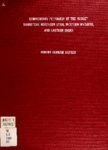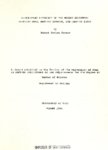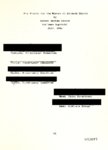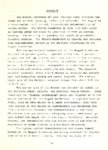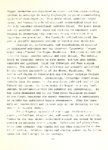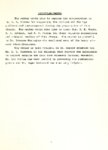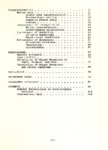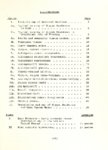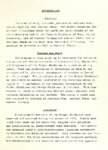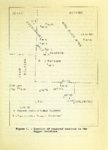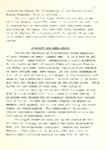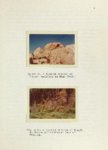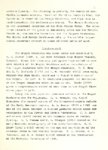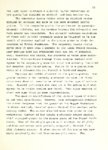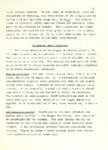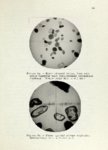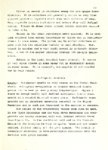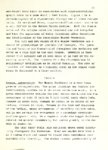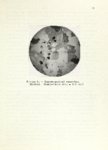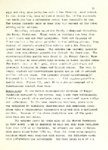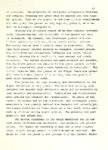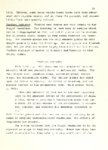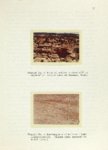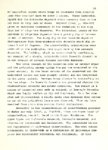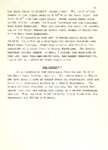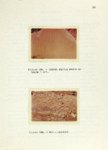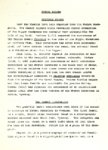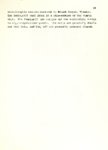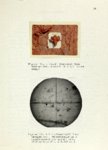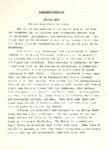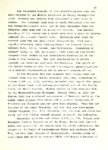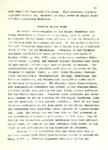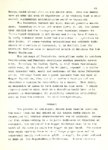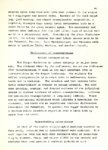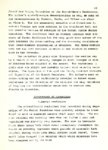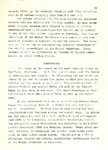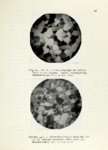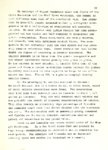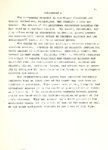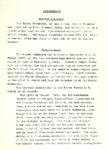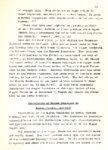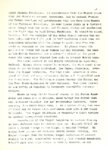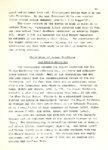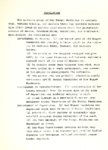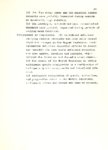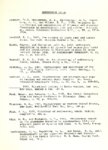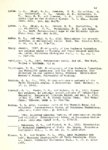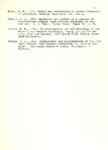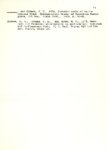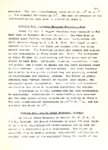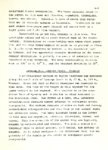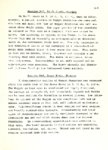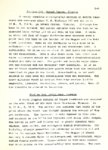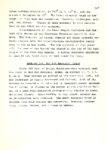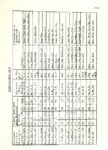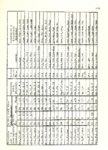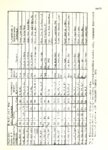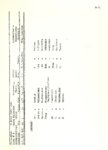| Description |
The Nugget Sandstone of late Triassic-early Jurassic age crops out in Utah, Wyoming, Idaho, and Colorado. The Nugget is a cross-bedded, buff to red, fine-grained orthoquartzite of eolian origin. The Nugget Sandstone is over 1700 feet thick in eastern Idaho and thins to less than 3,6 feet in, eastern Wyoming. The thinning is probably the result of pre-Middle Jurassic erosion. The Navajo Sandstone of central and southern Utah and northern Arizona is the southern equivalent of the Nugget Sandstone. The average mineral composition of the Nugget Sandstone is about 95 percent quartz, 3 percent orthoclase, 1 percent plagioclase and microcline, and trace amounts of the accessory heavy minerals magnetite, ilmenite, tourmaline, zircon, and garnet. Authigenic quartz overgrowths or a combination of overgrowths and calcite constitute the cement. The detrital material generally shows a high degree of rounding and sphericity and individual grains are mostly frosted. The average grain size of the detrital material ranges from about 0.08 mm. to 0.25 mm •• The source area of the Nugget was probably an uplift in the northern Idaho, Montana, and southern Canada region. Upper Paleozoic and Triassic sedimentary rocks are believed to be the source sediments for the Nugget Sandstone. A vigorous erosive agent, such as wave action in a beach environment, must have been present at the source to disaggregate the sediments and free the detrital material for transportation by the wind. The source area was p rob ab Ly undergoing nearly continuous uplift during the deposition of the Nugget Sandstone. Detrital material was transported from the source area to the area of deposition by winds blowding in a southerly direction. The typical eolian characteristics and sparse fossil record of the Nugget Sandstone are strong evidence for deposition in an arid desert climate. The vast majority of the Nugget Sandstone was deposited as dunes, and the cross-bedding visible in outcrops is mostly high-angle compound cross-bedding typical of dune deposits. Thin shale zones, parallel bedded zones, and low-angle multi-directional cross-bedded zones are the only non-dune depositional features found. The shale zones and the parallel bedded zones are-believed to represent short periods of abnormally high rainfall during which time dune formation was prevented. The low-angle multi-directional deposits probably represent periods of varying wind direction. Cementation, authigenesis, and introduction of material by introduced solutions are the important diagenetic changes which have affected the Nugget Sandstone. Solutions introduced into the Nugget carried calcite and iron oxides. The calcite forms an important cement in some areas, and the iron oxides, hematite and limonite, color the formation and form a minor cement. The movement of the solutions was probably controlled by the varying permeability of the Nugget Sandstone. The nature and degree of cementation are the most variable factors in the Nugget Sandstone. Interlocking authigenic quartz overgrowths form the cement in the overthrust belt and much of the Wasatch Mountains. In these areas the Nugget is a very hard, compact orthoquartzite with low porosity and permeability. In the Uinta Mountains and in the Wind River Mountains outcrops of the Nugget Sandstone are poorly cemented with a combination of calcite and authigenic quartz overgrowths. Here the porosity and permeability may be very high or low depending on the amount of calcite cement. The authigenic minerals of the Nugget Sandstone are quartz, orthoclase, plagioclase, and possibly zircon and garnet. Quartz is the most common authigenic mineral and occurs as over..,. growths on detrital quartz grains. Orthoclase and plagioclase occur less commonly than quartz but are also overgrowths on detrital grains. Euhedral zircon and angular garnet may be authigenic but their origin is not certain. |

